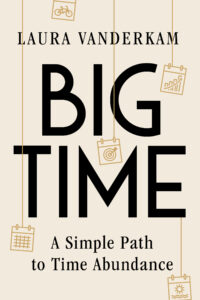 I’ve been watching a lot of Olympics coverage. I also recently reread A Sense of Where You Are, John McPhee’s profile of Bill Bradley when he was at Princeton (with a brief look at his 1964 Olympic stint, too).
I’ve been watching a lot of Olympics coverage. I also recently reread A Sense of Where You Are, John McPhee’s profile of Bill Bradley when he was at Princeton (with a brief look at his 1964 Olympic stint, too).
All this has me thinking about training. Describing Bradley practicing alone, McPhee wrote, “he moves systematically from one place to another around the basket, his distance from it being appropriate to the shot, and he does not permit himself to move on until he has made at least ten shots out of thirteen from each location.” In high school, Bill Bradley got a set of keys to the gym and “set a schedule for himself that he adhered to for four full years — in the school year, three and a half hours every day after school, nine to five on Saturday, one-thirty to five on Sunday, and, in the summer, about three hours a day.”
All that drilling gave him near perfect accuracy with free throws and an automaticity about the court that let him think multiple moves ahead. He’d pass to teammates before they even knew they’d be open. Good performance requires great practice.
I’ve been thinking about that because I’d like to become better at the craft of writing. I know that requires practice, just as basketball requires practice. But what does writing practice look like? What should I be doing for 3.5 hours per day (3 in the summer) to get better at this?
Blogging is one form of practice. Writing 500-800 word essays close to daily makes a person much faster at writing 500-800 word essays.
But blogging is a “scrimmage,” a practice version of the full performance. It’s not a drill like Bradley’s rotation around the hoop. Some of the biggest breakthroughs in any field come from isolating a specific skill and working to get better at it. So I’ve been trying to picture writing “drills.”
I have a few things I do occasionally that fall in this category, and that I should probably do more frequently. One is forced tightening. When I blog, I don’t worry (much) about how long my thoughts go. But over the years, my USA Today columns have had to get shorter and shorter. Back in 2002 they let me go close to 1100 words sometimes. Now the space has shrunk (literally — the paper is smaller) and they use more varied design elements. I only get 700 words. It is pretty hard to quote multiple people and use statistics to make an argument in 700 words — so my first drafts tend to be more like 850. Cutting to 700 requires some strategy but tends to hone things. I could try to cut all my blog posts by 10-20 percent. Or I could take random passages published elsewhere by other people and make them less wordy!
While working on my novel, I’ve been going through and trying to use better words — more exact words that don’t require adverbs to convey my thoughts. Doing this with random passages (or my own writing) could be a drill.
Ben Franklin supposedly analyzed the structure of famous passages. He’d study them, cut them apart and paste them back together, seeing how one bit flowed from another. Reading in general is good practice — though probably reading can be done better sometimes than others. I’ve been trying to read with a pen. I look for good phrases, good construction, or things that aren’t done as well as they might be.
For those of you who are also writers, I’m curious what sort of “drills” you’ve come up with to improve your craft. How do you practice to get better?

I do a lot of writing for grants and academic journals, and I like to practice writing or editing things to be in the active rather than passive voice. It makes everything so much shorter and cleaner.
@Chelsea- totally. I find myself using the passive voice way more often than I should. If I use it, I should mean to do it.
Great topic. I’ve been reading about deliberate practice, esp. related to teaching and learning, and wondered how to apply this concept to writing.
One practice I had a few years ago could be considered a drill– I took Madame Bovary in French and translated a page a day or so back into English, then comparing it to a published English translation. It served the purpose of letting me work on my French and also really seeing how the sentences were put together to make a story.
I don’t know why I quit that project, but now that I’m reframing it as deliberate practice, maybe I’ll get back to it!
@liz – get back to it! That sounds like an amazing drill.
Reports at work have a template that basically requires us to create four stories of varying sizes. 1) the first sentence of each “key finding.” 2) the aggregate of the key findings. 3) the entire Executive Summary, which includes a short introduction, ‘roadmap,’ and the key findings. 4) the entire report.
Having the four varying-sized stories to tell requires me to focus on what is really the most important things, but then gives me a chance to elaborate and explore additional context that is important for understanding those Important Things. Maybe you could try something like that? Tell the same story in two or three ways?
@Liz- I like that format. And what a smart template for work. I think a lot of work papers would be improved if people bothered to figure those 4 different versions of the story out.
I’ve been thinking about this post all day- I don’t really have an answer, but I love your question. I’d never thought about comparing writing drills to other forms of practice, but your basketball analogy immediately made me think of a drill I did when I was a hard-core musician. I’d take a difficult phrase (a “run”) and set a goal of playing it correctly five times in a row at a certain tempo. When I reached that, I’d set the metronome higher and repeat the exercise until I achieved performance tempo on that run.
I don’t know how to relate that type of drill to writing, but your question helped me make a connection between musical warm-ups and writing warm-ups. Warming up an instrument is crucial to a solid practice session, and I’d spend 20-30 minutes a day just warming up. For writing, my warmup is journaling. It gives me a chance to let the words flow freely, because I’m the only person who’s ever going to read it. When I open up my first writing project of the day, I’ve already gotten rid of any extra emotional baggage and set my tone for the session.
Thanks for the thought-provoking question!
@Leanne – thanks for reading and thinking about the question. Yes, journaling can be a warm-up. I sometimes write a rough draft of a blog post as a warm-up too…
Not a drill, exactly, but what about taking a class in a different kind of writing than you usually do, like poetry? I wonder if that would hone different skills that would help in your regular non-fiction and fiction writing.
As a crafty type, I love taking classes, especially in new techniques or areas that I probably won’t use regularly, but just want to try out. Usually there’s *something* that translates back into the stuff I love doing.
@ARC – I like the idea of taking a poetry class. I was going to post a poem alongside that wintry photo I just put up, but I can’t seem to make the formatting come out right. And there’s nothing worse than a poem with bad formatting. It doesn’t even make sense.
Tightening is something I do automatically — accuracy and brevity are both essential in a good index, so I get loads of practice in my work. For more creative writing, I’ve tackled Chuck Palahniuk’s “No ‘Thought’ Verbs” challenge. It’s difficult, and doesn’t always make for better writing, but it does force me to explore *different* writing, and I’ve had a couple of huge breakthroughs on my novel because of it.
A related practice is to try to cut out personal writing tics: I use more em dashes than Emily Dickenson, and have been working on cutting back.
[http://litreactor.com/essays/chuck-palahniuk/nuts-and-bolts-“thought”-verbs]
@Meghan – oh, the dashes. It’s a writing habit for me too and though I like to think I don’t overuse them — parenthetic as the phrases within often are, like this one — I probably do. 🙂